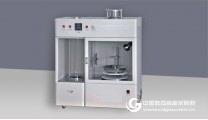Powder properties and test methods
The nature of the powder in the introduction to powder science: 1. Particle size and particle size distribution of powder and its determination method (1) Particle size and particle size distribution The particle size of the powder is the basic property of the powder. It has a significant effect on the solubility, compressibility, density, fluidity, etc. of the powder, thereby affecting the dissolution of the drug. With absorption and so on. Several methods for expressing particle size: directional diameter (microscopic measurement), equivalent diameter, volume equivalent diameter (measured by Coulter counter method), effective diameter (called Stocks diameter), sieve diameter (measured by sieving method) ). Particle size distribution: a certain amount of powder, the proportion of particles of different particle sizes. Understanding the significance of particle size distribution is to understand the uniformity of particle size, which is important for pharmaceutical formulation research. The particle size distribution is represented by a common frequency distribution, that is, the particles corresponding to the respective average particle diameters occupy a percentage of the entire particle group. (2) Method for measuring particle size: 1) Optical microscopy: The measurement of the particle size range of 0.5 to 100 μm generally requires 200 to 500 particles to be statistically significant. 2) Coulter counting method: The particle group is suspended in an electrolyte solution. The method can be used for the determination of particle size of suspensions, emulsions, liposomes, powder medicines and the like. 3) Sedimentation method: It is a particle diameter of a particle obtained by the Stocks equation, and is suitable for measurement of a particle diameter of 100 μm or less. 4) Sieving method: The earliest and most widely used particle size measuring method is used, and particles of 45 μm or more are often measured. Matters needing attention in particle size measurement: The sample should be properly selected and processed before particle size analysis; sampling should adopt a certain method to ensure the uniformity of the particles, the flow sample can be sampled at different times, and the stationary sample can take different parts of the medicine. Teach|Yuwang collects and samples, and then mixes the measurements; in order to make the sampling representative, the appropriate amount of sample should be taken. The sample size of the large sample should be 100g~1kg; the Coulter counting method and the sedimentation method are carried out in the liquid. In order to ensure the uniformity of the particles, an appropriate amount of a surfactant may be added. 2. The specific surface area of ​​the powder The specific surface area of ​​the powder is a measure of the particle size and solid adsorption capacity of the powder. The surface area of ​​the particles includes not only the outer surface area of ​​the particles, but also the internal surface area formed by the cracks and voids. Common methods for directly measuring the specific surface area of ​​a powder include a gas adsorption method and a gas permeation method (measuring an external surface area). 3. Porosity of powder Porosity is the ratio of the total pores in the powder. So how to test the fluidity, spatter and compactness of the powder? Come to Meihuayi to buy the MHY-27749 intelligent powder characteristic tester! Gas Bbq Grill,Gas Grill,Gas Barbecue,Small Gas Grill Jiangmen Merit Metal Electric Appliance Co.,Ltd. , https://www.meritbbq.com